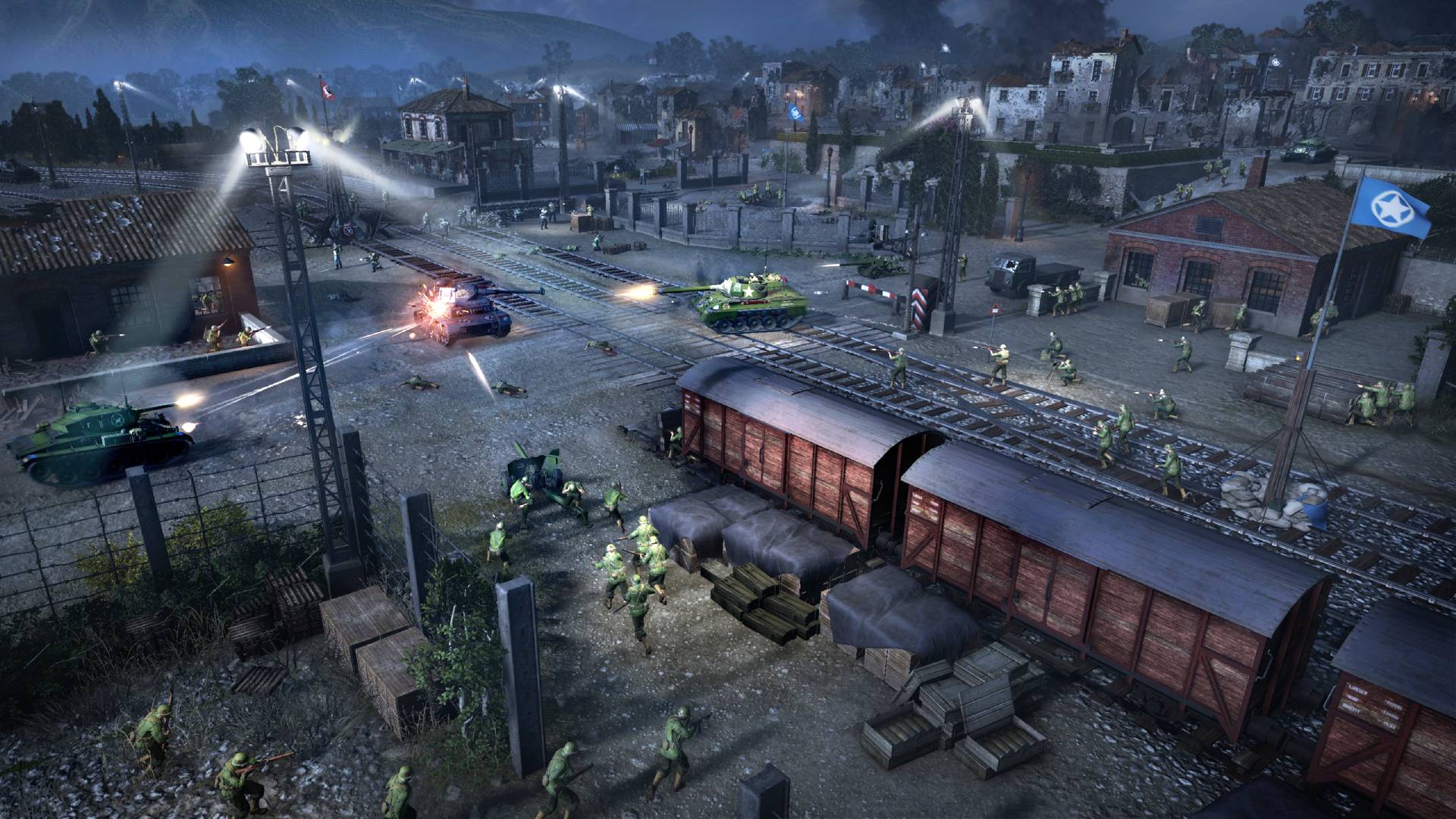Company of Heroes 3 isn’t Total War: WW2 – but it’s just as good
Turn it up

Cast a cursory glance across Company of Heroes 3’s Italian campaign map, and you’d be forgiven for thinking you’re looking at Total War: World War 2. Battalions of infantry and tanks dot the peninsula, shunting between settlements as they vie for territorial control. Armies are waiting to be recruited, cities lie open to conquer, and resources are ripe for gathering.
Across the turn-based campaign, you’ll assume command of the Allied forces to fight your way up Italy and liberate the country, but how you do this is very much up to you. Companies of troops, represented by miniature soldiers and tanks, must be moved about the map. When foes inevitably meet, the game zooms in, prompting you to fight a fresh RTS battle.
Our game is not an empire builder, It doesn’t span hundreds of years – we're focused, we're in a war
David Littman
It’s a big expansion of the core Company of Heroes formula and one that David Littman, VP of production at developer Relic, says will give players greater agency to chart their own path through the war. However, despite first impressions, this is far from the type of grand campaign you’d find in a Total War game.
“Our game is not an empire builder,” Littman says. “It doesn’t span hundreds of years of time that you can build an empire – we're focused, we're in a war. So if we compare Company of Heroes 3 to Total War, it's more like your biggest war with a neighboring faction for 50 to 100 turns [of a Total War campaign].”
Brightest hour

I find in my campaign’s first few turns, things are more straightforward than the likes of Total War: Warhammer 3. With no city management to think about, all your attention is given over to your armies – moving, upgrading, reinforcing, and supporting them. Each turn follows the same slick process of inching my companies closer to the next batch of enemy settlements and deciding which I would attempt to capture first or avoid entirely.
“If you look at our RTS and then you look at the campaign map, you'll see a lot of similarities,” Littman says. Both involve moving troops around a map to capture territories, utilizing terrain for defensive cover and line of sight, and connecting newly captured regions to create a constant flow of resources. Even those three metrics – manpower, fuel, and munitions – are the same in the RTS and turn-based segments of the game.
Transitioning between the two modes is butter smooth. More so than any Total War game I’ve played
Those similarities make transitioning between the two butter smooth. More so than any Total War game I’ve played, many of the tactical decisions I faced in Company of Heroes 3’s real-time battles translated wholesale to its strategic campaign. Just as a squad of riflemen might be pinned down by a hidden machine gun nest in an RTS fight, a machine gun emplacement fixed on the campaign map can catch whole companies off guard.
Get daily insight, inspiration and deals in your inbox
Sign up for breaking news, reviews, opinion, top tech deals, and more.
You’re encouraged to think carefully about where you lead your troops, to soften up enemy positions with naval artillery bombardments, and employ at least some of the same tactical thinking on the campaign map as you would in the real-time battles.
“The big difference is the campaign map is turn-based, so you can really slow down and play at your own pace,” Littman says. But even that distinction is diminished by the game’s new real-time pause feature. With a hit of the spacebar, all RTS action is suspended, letting you queue up commands for your units to follow once play resumes. Entire campaigns, from the moment you ship out to Italy, right the way through your time blowing the country apart, can be played at the same stride.
War has changed

Company of Heroes 3 doesn’t quite match the level of freedom that many of the biggest strategy titles have angled toward in recent years. I love Paradox games like Crusader Kings 3 and Hearts of Iron 4, as well as the Total War series, for their sandbox maps that give me few, if any, objectives to pursue. Their massive worlds are more like oysters created to facilitate whatever the player wants to do. Crack them open, and emergent storytelling on a vast scale is your delicious reward.
What we're trying to do is put you in the shoes of an allied commander and what it must have felt like to go into Italy with your troops.
David Littman
As Littman says, Company of Heroes 3 is “not a full sandbox”. Every campaign will follow the same central thread, insofar as you’ll always be trying to liberate Axis-held Italy by fighting your way up the country from the south. “We’re not trying to change or alter history,” Littman says. “What we're trying to do is put you in the shoes of an allied commander and what it must have felt like to go into Italy with your troops.”
However, campaigns can play out in several ways, varied not only by which battles you fight and how you upgrade your armies, but also your basic strategy for breaking the German defenses. Littman says some players will choose to “airport hop” their way up the map to bombard the enemy forces from above, while others might focus on expanding their supply hubs to improve the reach of their armies while inflating their resources to accelerate their conquest.
“No two campaigns will ever play out the same because every decision you make changes things, so everyone will have a different experience,” Littman says. “But I wouldn't say we're going as far as the sandbox. If it was a true sandbox, you could have all kinds of different companies and maybe not liberate Italy and just play around. This is a war, and you are on the Allied side, and you need to liberate Italy. That's the bottom line.”
Company of Heroes isn’t pivoting fully to the turn-based flavor. Alongside the Italian campaign, it will launch with a North Africa campaign that follows the linear, mission-based design of past entries in the series. That said, I’m most excited to haul myself off to Italy. Relic looks to have cooked up a major expansion that pushes Company of Heroes in a new direction without losing any of the series’ spirit. In other words, expect to spend hours dressed in your digital khakis uttering “one more turn”.

Callum is TechRadar Gaming’s News Writer. You’ll find him whipping up stories about all the latest happenings in the gaming world, as well as penning the odd feature and review. Before coming to TechRadar, he wrote freelance for various sites, including Clash, The Telegraph, and Gamesindustry.biz, and worked as a Staff Writer at Wargamer. Strategy games and RPGs are his bread and butter, but he’ll eat anything that spins a captivating narrative. He also loves tabletop games, and will happily chew your ear off about TTRPGs and board games.